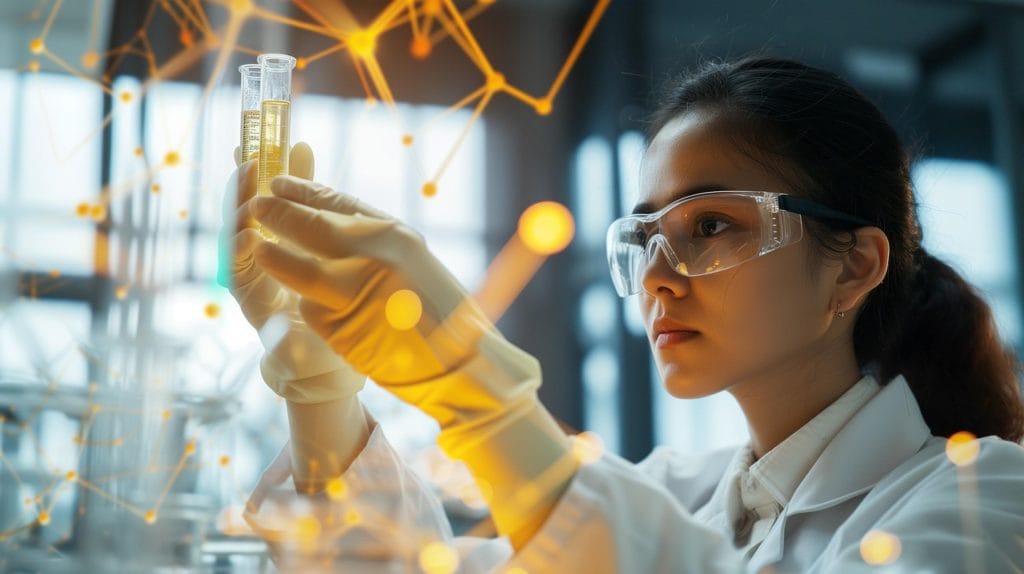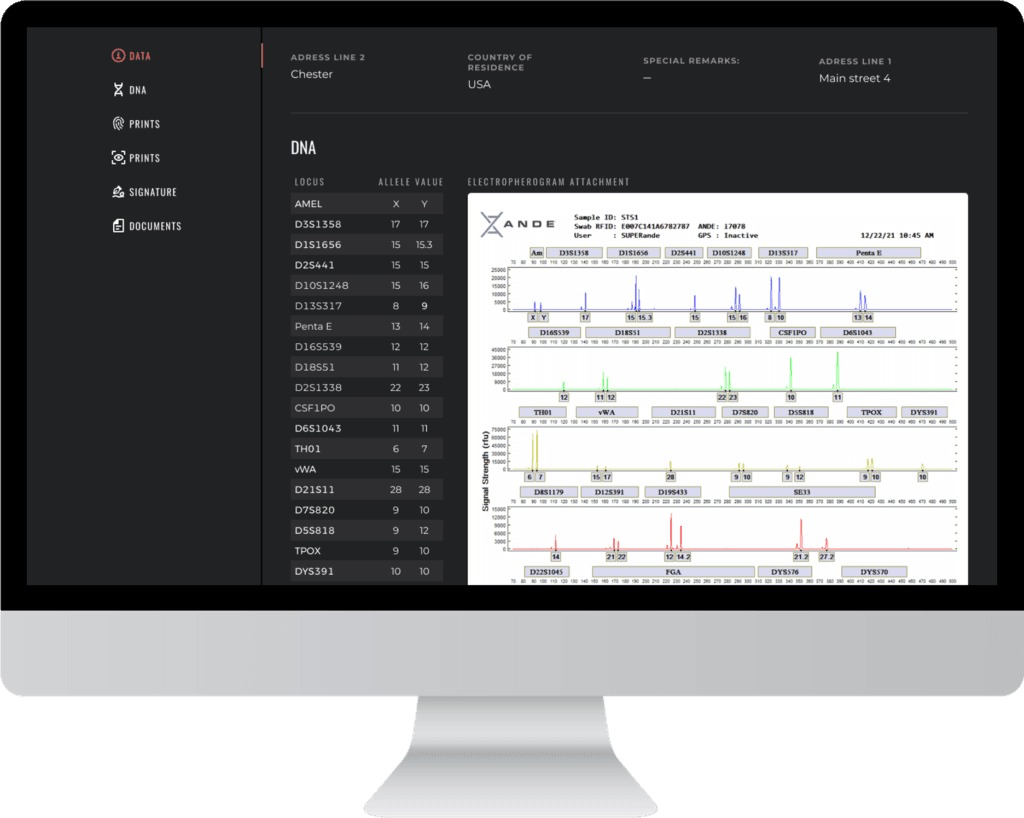DNA Biometrics definition
DNA biometrics uses genetic information, specifically DNA profiles, as a unique identifier for identification, verification and authentication. By analyzing a person’s genetic code, a distinctive biometric template is created for security and identification. This technology is based on the fact that each person’s DNA sequence is unique, making it a highly reliable form of biometric identification.
What Is DNA?
Deoxyribonucleic acid (DNA) is a molecule that carries the genetic instructions for the development, functioning, growth, and reproduction of all known living organisms and many viruses. It consists of two long chains of nucleotides twisted into a double helix and contains the genetic information for an organism.
What Is DNA Biometrics?
DNA biometrics is a biometric technology that leverages an individual’s unique genetic code for identification and authentication. By analyzing specific regions of an individual’s DNA, a distinct genetic profile can be created, offering a highly reliable and accurate form of biometric identification.


How Does DNA Biometrics Work?
Sample Collection
A small sample of cells containing DNA is collected, typically via a cheek swab or other bodily fluids.
DNA Extraction
The DNA is separated from other cellular materials in a laboratory, resulting in a pure DNA sample.
Genetic Analysis
Specific genetic markers unique to each person are identified, forming a “genetic fingerprint” or profile.
Database Comparison
The generated DNA profile is compared against existing databases or a known reference sample to confirm identity.
Use in Applications
Once verified, the DNA profile can be employed for various purposes, including suspect identification, relationship verification, and secure facility access.
Unique Traits of DNA as a Biometric Identifier
DNA remains constant throughout an individual’s life and is highly distinctive. Unlike external biometric traits such as fingerprints or facial features, DNA is not susceptible to alteration, making it a robust and reliable identifier. Its vast sequence diversity also ensures minimal risk of overlap between different individuals.
Advantages of DNA Biometrics
High Reliability and Accuracy
DNA provides a strong link between individuals and their genetic relatives, enhancing the reliability of identification.
Forensic Traceability
Like fingerprints, DNA can be left behind, allowing for precise forensic analysis of crime scenes.
Rapid Advancements in Technology
Rapid DNA identification devices can produce results within 90 minutes, revolutionizing time-sensitive identification scenarios. Large-scale DNA databases boost match likelihood, and standardized test chemistries facilitate interoperability.
Familiarity and Public Acceptance
Widespread use in healthcare and forensics has increased public recognition and acceptance of DNA testing.
Integration with Genomics
Future healthcare genomics can benefit from DNA biometrics by enabling the comprehensive identification of unknown forensic samples.
Common Applications of DNA Biometrics
Forensic Investigations
One of the most common applications of DNA biometrics is in forensic investigations. DNA analysis can help law enforcement agencies identify suspects or victims of a crime by analyzing biological samples collected from a crime scene. This method of identification is highly accurate and can even identify individuals in cases where other identification methods have proven difficult.


Healthcare
DNA biometrics has promising applications in healthcare and medical research. Genetic testing can provide insights into a person’s genetic makeup, allowing physicians to make informed treatment decisions and personalize medical interventions. In addition, DNA biometrics enables medical researchers to identify genetic mutations associated with diseases, potentially leading to the development of new treatments and cures.
Access Control
DNA biometrics can be used in access control systems for highly secure facilities such as data centers or research labs. This technology makes it nearly impossible for unauthorized individuals to access sensitive locations or data. Access can be granted only to people whose DNA profiles match those in the system.
Border Security
DNA biometrics has potential applications in immigration and border control, where accurate identification is essential. It is highly accurate and can provide a means of identifying individuals who may not have identification documents or who may be using fraudulent ones. This technology may also be used in identifying missing persons and mass disaster victims.


Challenges of DNA Biometrics
DNA biometrics requires specialized equipment for DNA extraction and analysis, which can be time-consuming and pose challenges in time-sensitive identification scenarios. Additionally, the storage and use of genetic data raise privacy concerns and ethical considerations. Despite these challenges, DNA biometrics offers a high degree of reliability.
Future Developments and Applications
The future of DNA biometrics holds promise for advancements in personalized medicine, forensic investigations, and enhanced security measures. As technology evolves, it may become more accessible and cost-effective, leading to broader adoption in various industries. Furthermore, advancements in DNA sequencing technologies may enable rapid, on-the-spot DNA analysis for identification and verification purposes.